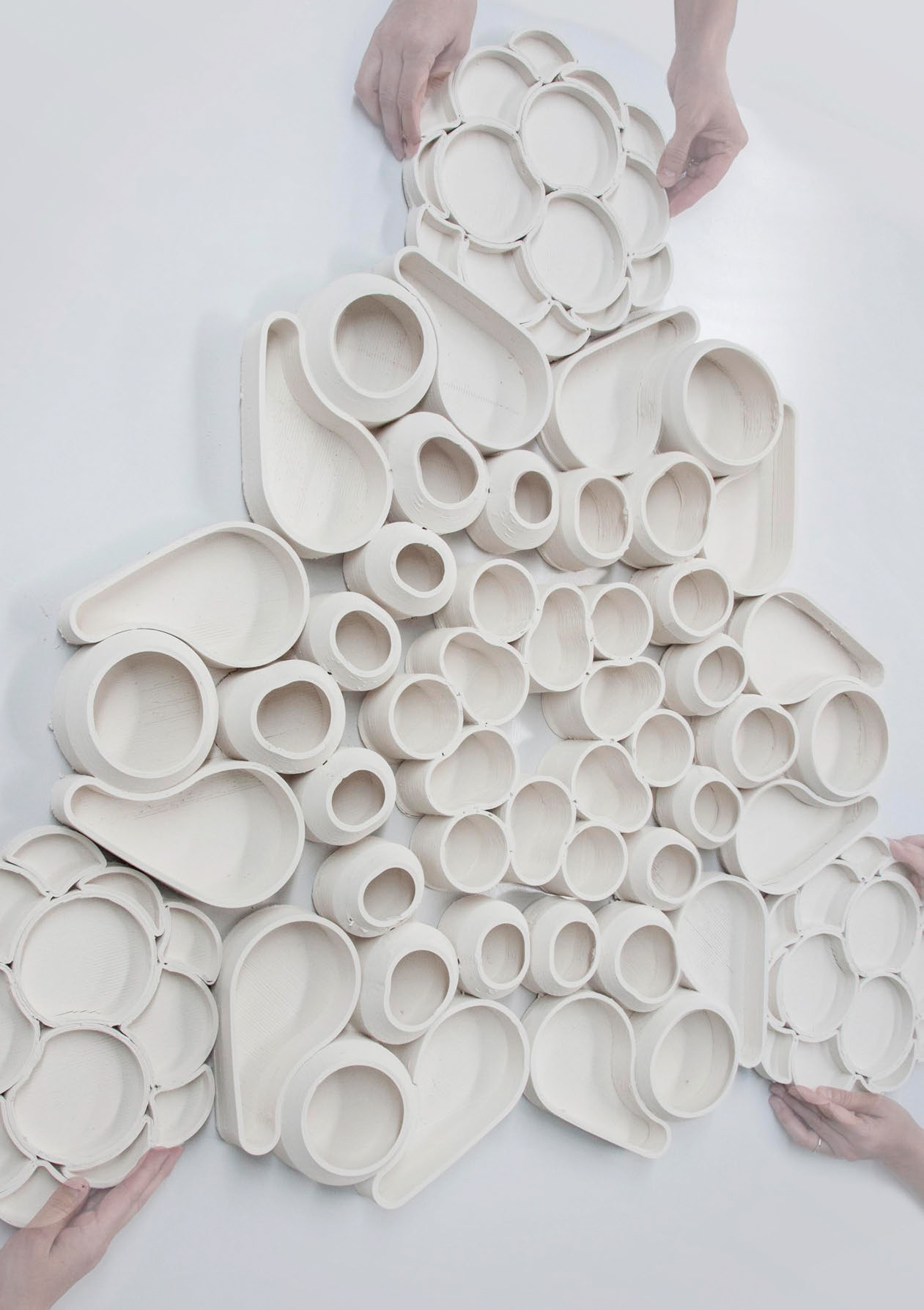
Micro-Hortus Conclusus -
Ceramic 3d printed micro-garden lattices
_
Leire Asensio Villoria + David Syn Chee Mah, University of Melbourne
Project Assistant: Candela de Bortoli.
Flower and plant advice: Warren Worboys, Royal Botanic Gardens of Victoria.
Floral Design: Azumi Ishikawa, Azumi
This proposed future prototype scales down our conventional focus and association with what constitutes a ‘garden’. Riffing off the tradition of the enclosed garden (hortus conclusus), the miniature or micro-world of small plants is deliberately framed and given authority by keeping things small and delicate.
The current prevailing approach towards the cultivation of our environments, whether it be in urban ecologies or agriculture is rapidly tending towards the monocultural. An attentiveness to the micro-world, often unseen at our feet, affords us an awareness of the greater diversity that may constitute a wider environment or ecology, spanning across the full spectrum of sizes and scales.
The mini-horticultural world has been coming into focus as a valuable biological resource that has the potential to realign our relationship to our wider ecology. The ignored world of bryophytes are an untapped new sensing network that has the capacity to act as indicators or monitoring agents of the air quality and pollution in our cities. More recently, the burgeoning trend of microgreens has been found to offer a highly concentrated source of nutrition which can be cultivated with a smaller environmental impact and allowing for the diversification of food systems in urban areas.
Pairing fourth industrial revolution manufacturing advances with associative design and modelling, this prototype offers a process that allows for the generation of larger ceramic micro-garden lattice systems that have the capacity for customisable differentiation. The ancient material world of ceramics and its characteristic properties offers a logical framework as well as growing medium for the miniature world of micro-plants.
The base associative model leverages the natural structural and space filling capacities of the circle which is scaled up to form an intricate lattice. Variables in circle size, thickness, tapering (to produce cylindrical or conical profiles) and depth afford the capacity for the lattice to take on an opaque thickened section or a lighter, delicate lace-like quality. This translates to a wide gradient of qualities of exposures, shading, protection, moisture and sizing or in other words; a diversified range of synthetic habitats and micro-climates.
The research aim of this prototype is an exploration of the capacities for novel fabrication technologies to construct cultivated synthetic micro-ecologies.
_
Leire Asensio Villoria_ is a registered architect in Spain and studied architecture at the ETSASS (Escuela Tecnica Superior de Arquitectura de San Sebastian) and the Architectural Association School of Architecture, London, UK. Since 2002, Leire has been collaborating with David Syn Chee Mah as asensio_mah. Leire is currently a Senior Lecturer at the University of Melbourne’s School of Design. She has taught at Harvard University’s Graduate School of Design from 2010 to 2017, at the AA School of Architecture, from 2004 to 2007 and at Cornell University’s College of Architecture, Art and Planning from 2006 till 2010. Leire is currently a doctoral candidate at RMIT University.
David Syn Chee Mah_ is a senior lecturer in urban design and architecture at Melbourne School of Design. David was a lecturer at Harvard’s Graduate School of Design (2010-2017). He taught design and theory at Cornell University’s department of architecture (2007-2010) and Landscape Urbanism at the graduate design school of the AA (2004-2007). David is currently a doctoral candidate at RMIT University. David has been collaborating on creative works in architecture, landscape and urban design with Leire Asensio Villoria as asensio_mah since 2002.
Image: A 3d printed porcelain framework of varying sizes and extrusion profiles provide a synthetic range of micro-climates for cultivating a micro-gardens.